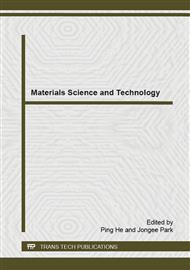p.108
p.115
p.120
p.131
p.138
p.142
p.148
p.154
p.160
Blast-Hole Cuttings Grindability Relationship with Silica Content and Bit Wear Rate
Abstract:
The relationship between grindability of blast-hole cuttings, strength parameters and bit wear rate were investigated. In order to achieve this, drill cuttings were collected from twenty blast-holes drilled in a quarry. The samples were tested in the laboratory for Silica content using X-Ray Fluorescence (XRF) spectrometer. Also, the length of button worn on the surface of bit was measured at regular interval with aid of digital vernier caliper on the field as drilling operation progresses to determine wear rate. Sieve analysis was used to determine the size distribution of the blast hole cuttings in the laboratory using sieve shaker while grindability was determined using the ball mill, by grinding for certain number of revolutions. The result obtained show that the weight of drill cuttings retained on 850μm decreases while weight retained on 75μm increases as wear rate increases. Grindability was correlated with wear rate and weight retained at 75μm sieve, the value of multiple coefficients of correlation is 0.126 and 0.064 respectively, this show that there is no relationship between grindability, wear rate and weight of cuttings retained on 75μm. The result of correlation of wear rate and weight retained at 75μm shows that strong relationship exist between them and the value of multiple coefficient of correlation is 0.892.
Info:
Periodical:
Pages:
138-141
Citation:
Online since:
December 2014
Authors:
Keywords:
Price:
Сopyright:
© 2015 Trans Tech Publications Ltd. All Rights Reserved
Share:
Citation:


